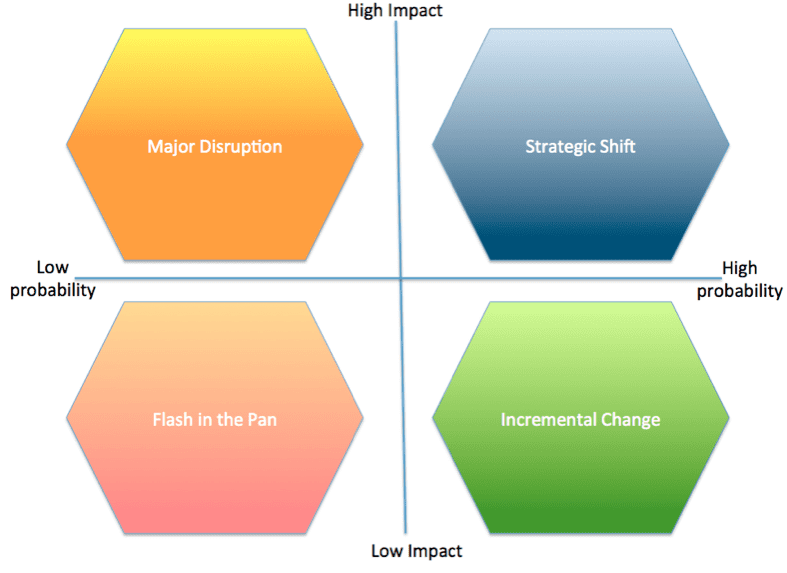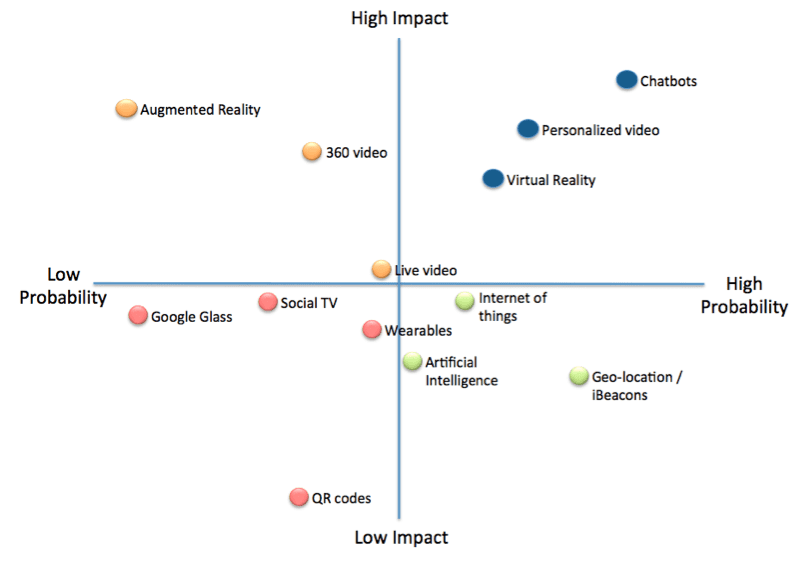Plan your use of new marketing technologies to future-proof your business
Digital Marketing is constantly playing catch up with the latest new tech trends. This means that the only way to get great results from digital marketing and execute a successful digital marketing strategy is to be aware of the latest technology and be actively innovating by putting cutting-edge techniques into practice. Not doing so is a sure fire way to fall behind the competition.
The pace of technological change is not just relentless, it is constantly increasing. Where once it may have taken 10 years for a platform to achieve 50% adoption, now it may only be two or three- as you can see from the chart below. As these trends accelerate we could soon enter a time well new technologies decelerate so fast we measure the time for them to reach the masses in weeks and months rather than years and decades.
Never fear, the mar tech revolution is here!
Let's be clear about one thing. As much as they may seem to be a threat to established ways of doing business, these trends are on balance excellent news for marketers. They bring new opportunities to engage with customers and sell products. If you fall behind with them you won't think there a positive development, but for those that successfully utilize them and integrate them into their overall business strategy, the latest technologies will be fantastic for marketers. The key is developing a proper strategy for their use with aligns with overall business goals whilst proving actionable KPIs for those working 'at the coalface'.
How to judge how a tech trend on the horizon will impact your business
Predicting the future with 100% accuracy is impossible, but failing to plan for the future is a recipe for getting left behind. We can make informed decisions about the future based on current and previous events, and by utilising tools to structure our thinking we can make better and more informed decisions that are more likely to prove accurate and thus useful for informing business planning.
One such tool which is highly useful when thinking about the impacts of future tech trends is the impact probability matrix.
How to use the impact probability matrix
The X-axis lets you consider the probability of a given event, so you can assign resources to planning for it accordingly. If a scenario is extremely likely (e.g. continuing growing female participation in the workforce increases demand for childcare) then it is very worth considering and devoting planning resources to (provided it is relevant to your business). Similarly if a scenario is possible but very unlikely (e.g. Facebook’s popularity collapses and it hemorrhages users to rival social networks), then it is worth considering how it may affect your business. But you will want to reserve the majority of planning time and resources to more likely scenarios.
The Y-axis is about the impact the change you will have on your business. For example the trend towards an increasing demand for childcare may be very important to consider if you are a child care provider or a recruitment company which sources childcare workers. However, it will not need to be considered if you are in the flood insurance industry. Thus, once you have completed the impact probability matrix by mapping out a number of scenarios across the four quadrants, you should concentrate of those scenarios which have fallen in the top right section of the quadrant. Scenarios falling into the top left or bottom right quadrants will also need some consideration, but those in the bottom left can be mostly disregarded.
Below we’ve provided examples of how you consider the four different quadrants, so you can get a feel for what should go in each.
High-probability / Low-impact:
These are big trends that you can see coming a mile off, but will only slowly change business processes. Think a declining birth rate in the country meaning smaller family sizes or trends around reduced spending on 'things' and increasing spending on 'experience'. Incremental change will be required, but it will be a slow build that requires a similarly patient evolution.
Low-probability / Low-impact
The future will be different from the present, that's the one thing that is certain. But you do get trends that come along and seem to be the next big thing, only for them to pass without making any major impact. Sometimes you do get a 'flash in the pan', although often these trends do come back around once the technology has matured years later. If you thinking on hoping on a bandwagon based around a new emerging technology, you should also consider what would happen if it turned out to be a fad which quickly receded.
High-probability / High-impact:
This is the area where serious change really needs to be considered. For example, if you a bank, you can't put your head in the sand about the need to facilitate mobile transactions for your customers on the go. The trend is clear, you need to plan for it and may need to make major shifts in the way your business delivers its services if you want to stay ahead.
Low-probability / High-impact:
These are scenarios which you may not think will happen, but need to be planned for nonetheless. After all, things to tend to catch us off guard. 10 years ago if I'd said there was a major bubble in the housing market the banks wouldn't have paid any attention, but in a year I'd be proved right. A similar scenario today might be what if markets suddenly turn on tech unicorns they consider to be overvalued and we see a similar scenario to the 2000 dot com crash. Hopefully it won't happen, but if it does you will be in a better position than most because you put a plan in place for it.
We’ve created an example probability matrix for a given business to show you how you could map the possibility of new technology trends disrupting your business, thus letting you consider where to concentrate your planning and investments.
It’s important to remember that these technologies will all affect businesses differently. So whilst there may be a very high chance that iBeacons will affect a high street store selling handbags, they may have only a very low chance of disrupting an online eCommerce business. Likewise, 360 video may offer very little in the way of useful business impact for a financial services industry, but could be a huge opportunity for travel brands. Thus you should use the impact probability matrix to construct your own map of possible scenarios, rather than rely on generic ones which will not be suited to your own business.
Once you've established which technology trends will most impact your business, you need to start planning how to implement them and get the most advantage from their development.
To do this you'll need in-depth knowledge of the individual technologies and case studies of how different businesses have been successful by utilising the new trends for marketing.
Smart Insights have just released a brand new guide to the latest innovation trends in marketing, covering case studies right up to September 2016. Expert Business members can access the guide from today. The new technology trends covered in the guide are:
- Virtual Reality
- 360 Video
- Chatbots
- Augmented Reality
- Geo-location
- Internet of Things
source http://www.smartinsights.com/managing-digital-marketing/marketing-innovation/utilise-innovative-new-marketing-technologies/



No comments:
Post a Comment